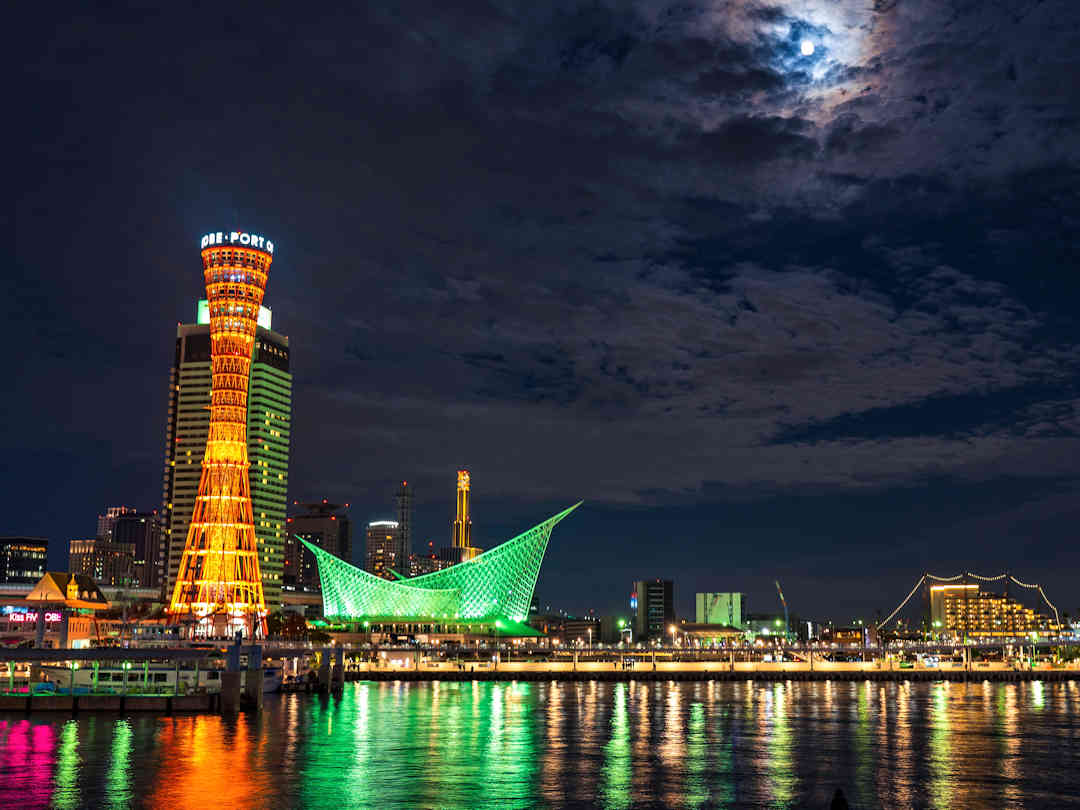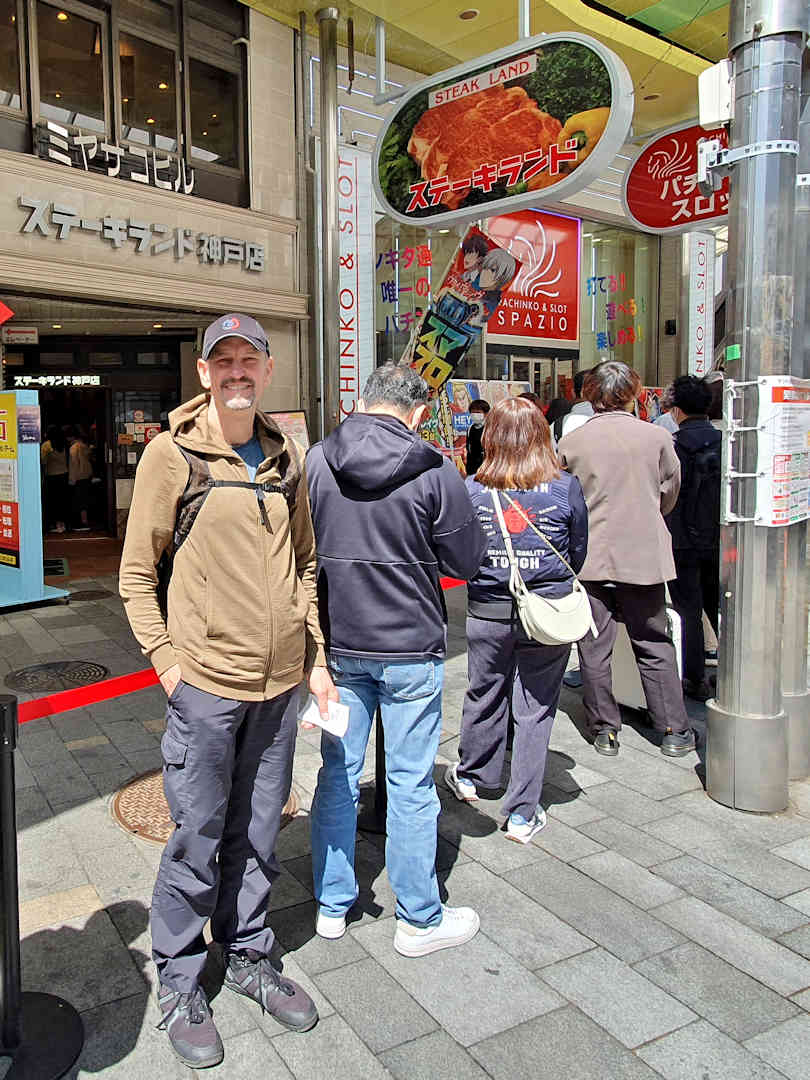The name Kobe is synonymous with the famous Wagyu from this region. But there’s so much more to Japan’s sixth-largest city than a melt-in-your-mouth piece of meat. In this article, we’ll take you on a 24-hour journey through Kobe, showcasing the best experiences this beautiful city has to offer. Get ready to discover the (lesser-known) wonders of Kobe.
Download your Sustainable Travel Checklist and show the world you care
As travellers, we should all be aware of our travel behaviour and its environmental, economic and social impact; and make conscious decisions about it. Too often, we hear negative stories in the media about tourists behaving badly.
Here is your chance to tick some boxes and check out what it really takes to travel with a sustainable mindset.
Why Is Kobe worth visiting?
Located (roughly) halfway between Kyoto/Osaka and Himeji, Kobe has somehow flown under the tourist radar, which means you get to experience its charm without the crowds. Even during Sakura, you can enjoy the beauty of the blooming cherry trees without hordes of tourists. While Kobe doesn’t feature a 17th-century castle-like Himeji, it still has plenty of worthwhile attractions to offer.
If you’re wondering whether to include Kobe on a two- or three-week trip to Japan: Kobe makes a great day or overnight trip from Kyoto or Osaka. And if you happen to travel further west, why not make it a stopover and break up your journey between Kyoto/Osaka and Hiroshima? You could even combine a visit to Kobe with our Himeji itinerary.
Map of Accommodation, Points of Interest, Eateries and Transport
Below is a map of the recommended accommodation, points of interest, eateries and transport terminals/stops mentioned in this article.
When is the best time to visit Kobe?
Kobe is a great Spring or Autumn destination. Even during cherry blossom season (usually the second half of March), when other cities are chock-a-block full of people, Kobe is pleasantly uncrowded. The weather during those periods is also perfect to explore the city, with beautiful sunny days and maximum temperatures in the high teens (Celsius).
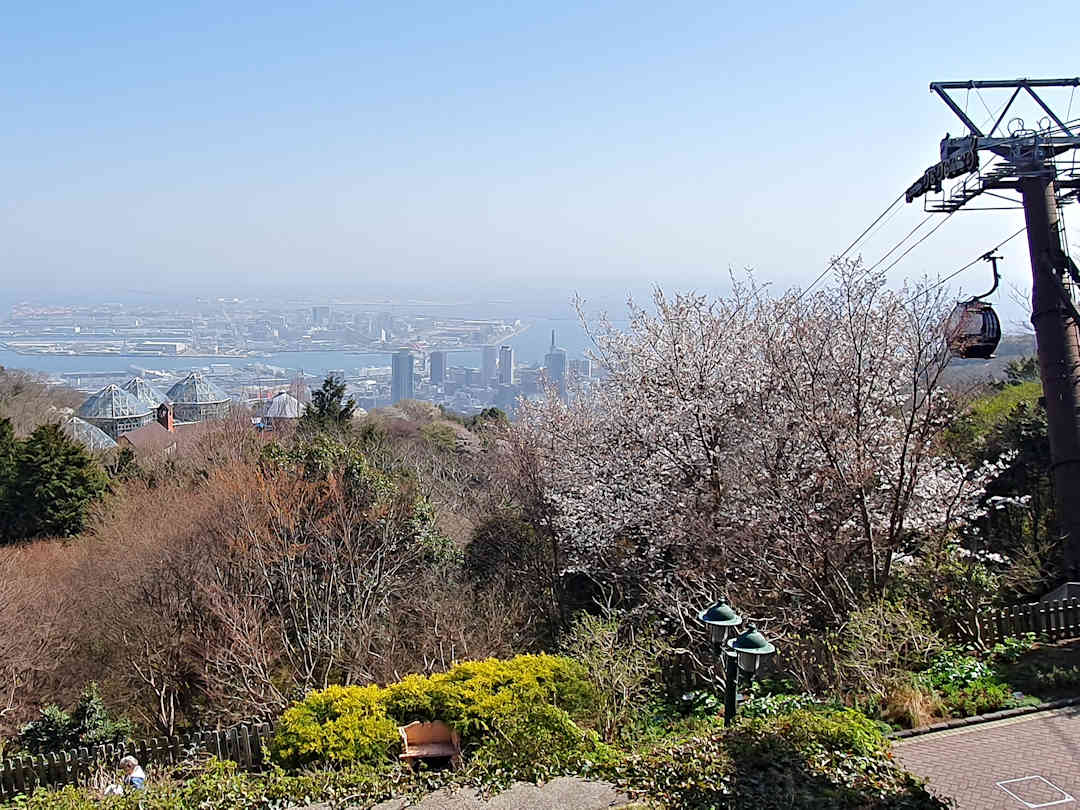
Kobe is pleasantly uncrowded, even during Cherry Blossom Season
How to get to Kobe
Like Hiroshima and Himeji, Kobe is conveniently located on the Sanyo Shinkansen route between Osaka and Fukuoka (Hakata). The bullet train stops at Shin-Kobe, a mere 12-minute ride from Shin-Osaka, 15 minutes from Himeji, and around 30 minutes from Kyoto. It takes a little over an hour to reach Kobe from Hiroshima, and approximately 2 hours and 45 minutes from Tokyo.
For those (without JR Pass) looking for more affordable options, there are alternative train routes available:
- Rapid Express trains on the JR Tokaido-Sanyo line take just under 30 minutes from Osaka Station (and just under an hour from Kyoto Station) to Kobe-Sannomiya. The same train also takes around 40 minutes to travel between Kobe-Sannomiya and Himeji.
- Commuter trains on the Kobe line or Hanshin line are another option for travel between Kobe and Osaka, taking around 35 minutes between Kobe-Sannomiya and Osaka-Umeda.
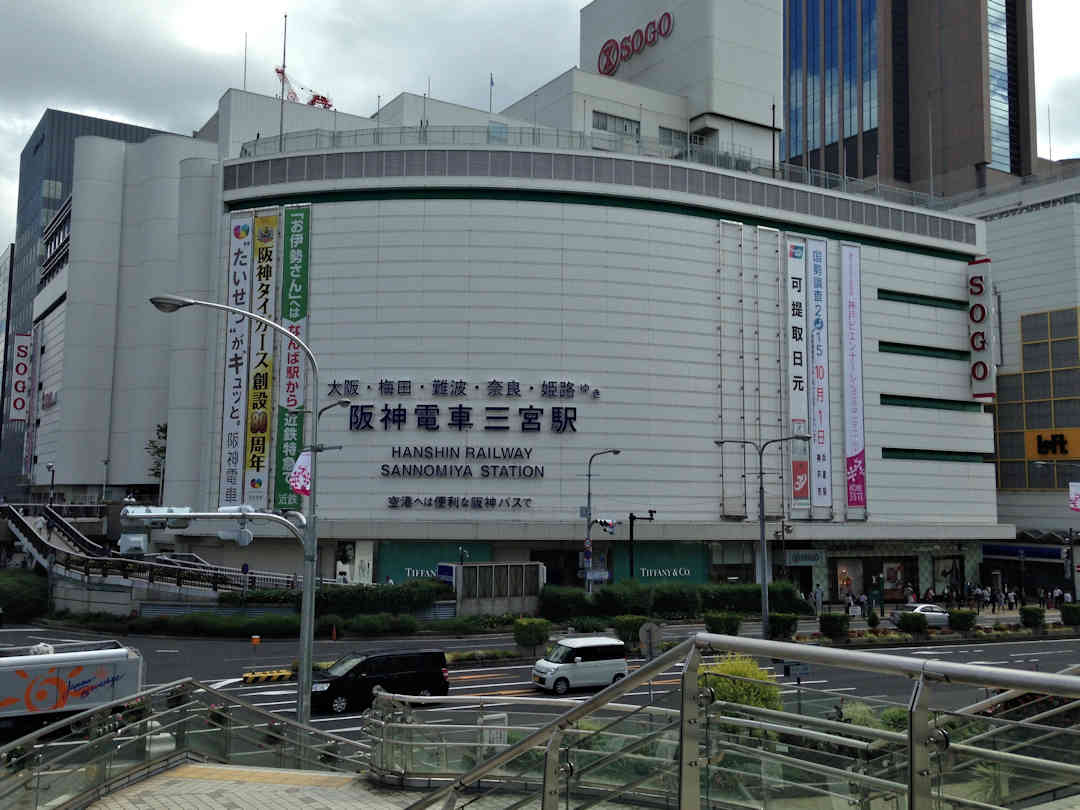
Kobe also has its own regional airport [Official website, Google Maps location, IATA: UKB), located on an artificial island in the Seto Inland Sea 8 kilometres south of Kobe-Sannomiya Station and easily accessible by public transport.
There is also a convenient high-speed ferry between Kobe Airport and Kansai International Airport [Official Website, Google Maps location, IATA: KIX] south of Osaka which takes you across the bay in just 30 minutes.
How to get around Kobe
Kobe is perched between the mountains to the north and the Seto Inland Sea to the south. A large part of the city sits on flat, reclaimed land (part of the reason for its destruction during the 1995 earthquake – more on that below).
While the city is easily walkable, we recommend making use of the very efficient public transport options between the sights on our itinerary, including:

Getting around Kobe is easy on foot or by public transport | Photo by Glenn Villas on Unsplash
How best to experience Kobe in a day
Morning
Start your day early by taking the train to Kobe. Upon arrival, find a convenient coin locker at the Kobe Train Station to store your luggage or if you’re planning to stay overnight, head to your accommodation and ask to leave your luggage there for the day.
From there, make your way to The Great Hanshin-Awaji Earthquake Memorial Museum [Official website, Google Maps location]. Try to be there when it opens at 0930h (the museum is closed Mondays – or Tuesdays if the Monday is a public holiday – as well as 31 December and 01 January).

The Great Hanshin-Awaji Earthquake Memorial commemorates the devastating earthquake that struck Kobe on 17 January 1995
The museum commemorates the devastating earthquake that struck Kobe on 17 January 1995. Housed in two connected buildings and over multiple floors, it provides visitors with a close-to-real earthquake experience, shares insights into the recovery efforts, earthquake-safe building practices as well as learnings from the earthquake for future disaster preparedness (beyond earthquakes).
Many of the exhibits are hands-on and interactive, and local volunteers are eager to answer any questions (often in very good English). Plan to spend around two hours here, as there is a lot to see and learn.
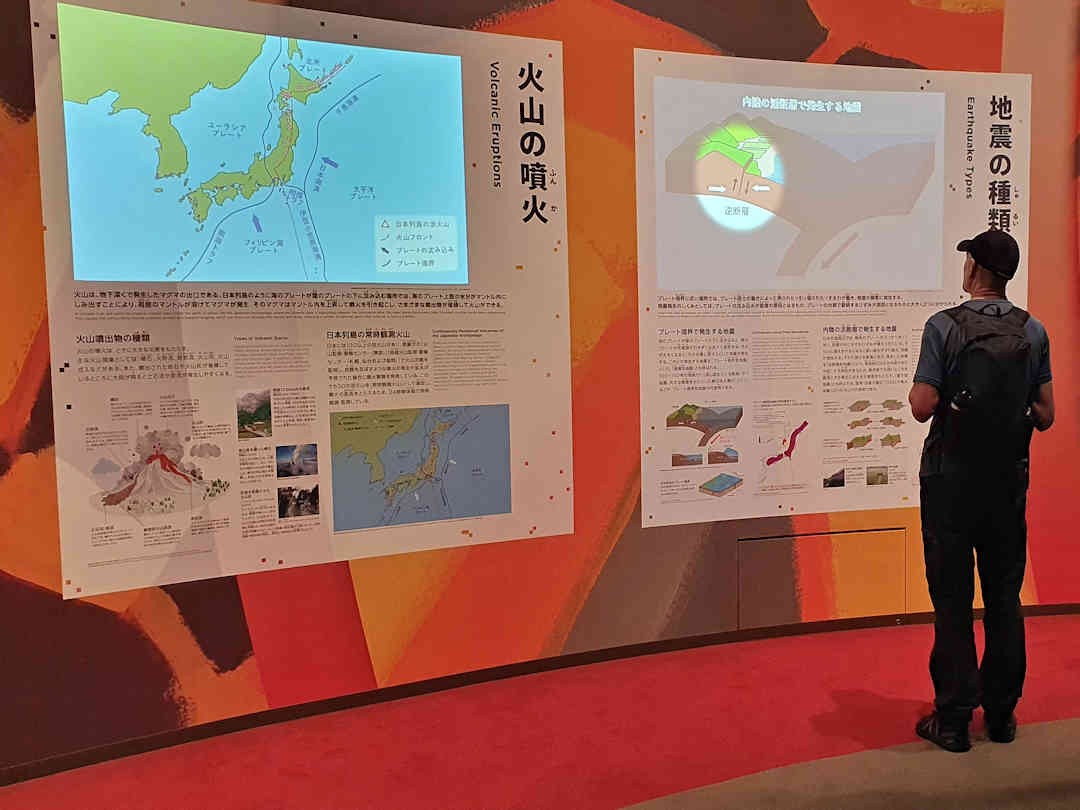
The exhibits at the Great Hanshin-Awaji Earthquake Memorial in Kobe are informative, hands-on and interactive
Lunchtime
After immersing yourself in the history and stories surrounding the earthquake, head (back) towards Kobe-Sannomiya Station for a delicious lunch. Visiting the city famous for its beef, it would be a shame to miss out on this culinary experience.
If money is no object, Tor Road Steak Aoyama [Official website, Google Maps location] on Shimoyamatedori comes highly recommended. Here, you can enjoy top-quality Kobe beef prepared to perfection.
If you’re after a more affordable option, head to Steakland Kobe [Official website, Google Maps location]. This restaurant offers a teppanyaki-style set menu. You can watch the chef prepare the beef (and accompanying side dishes) right in front of you, and the Kobe Beef steak lunch truly melts in your mouth. Be prepared to wait as Steakland Kobe is popular (we waited 30 minutes), but the delicious food and experience are worth it.
The restaurant has two locations close to each other – one on Kitanagasadori, the road parallel to the train lines (on the first and second floor), and one in an alley around the corner (on the 6th floor). Both have ticketing systems (don’t forget to print a ticket from the machine by the entrance before you start queuing), but we recommend the one on Kitanagasadori for a smoother experience.
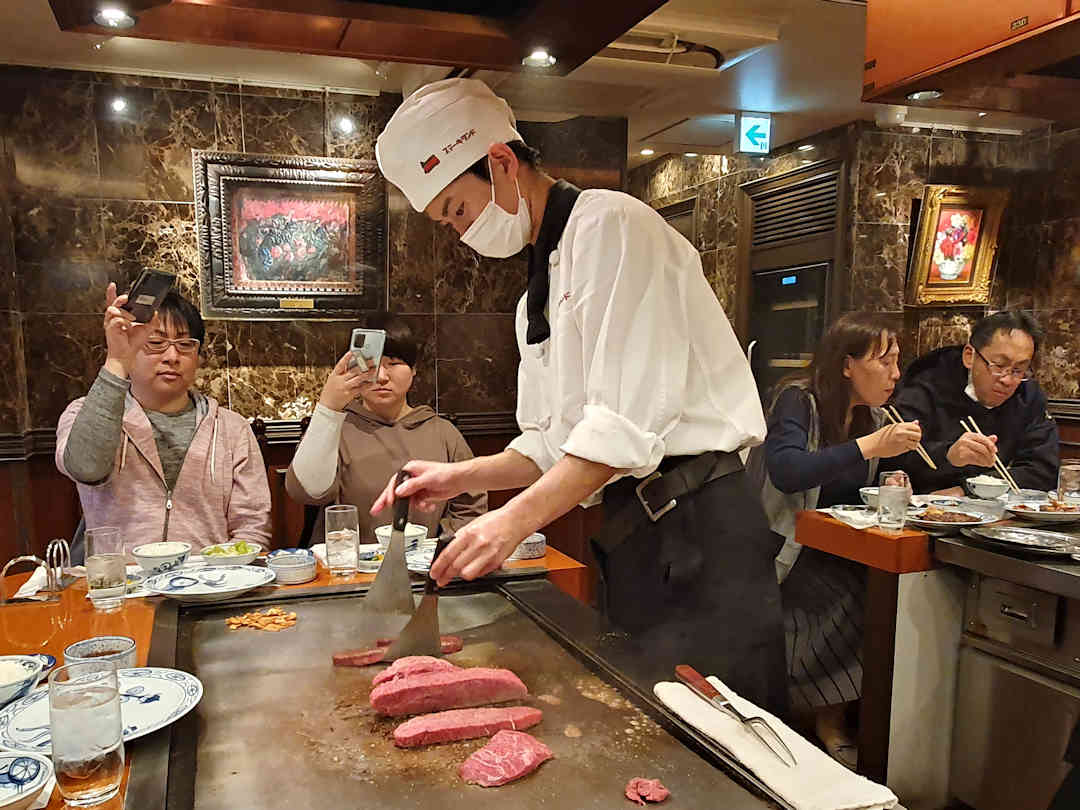
At Steakland Kobe, you can watch the chef prepare the beef right in front of you
Afternoon
After lunch, pop by nearby Ikuta-jinja [Google Maps location]. Founded in the early third century, it’s one of the most historic shrines in all of Japan. The shrine is a popular place to get married, and if you’re lucky, you might witness a wedding.
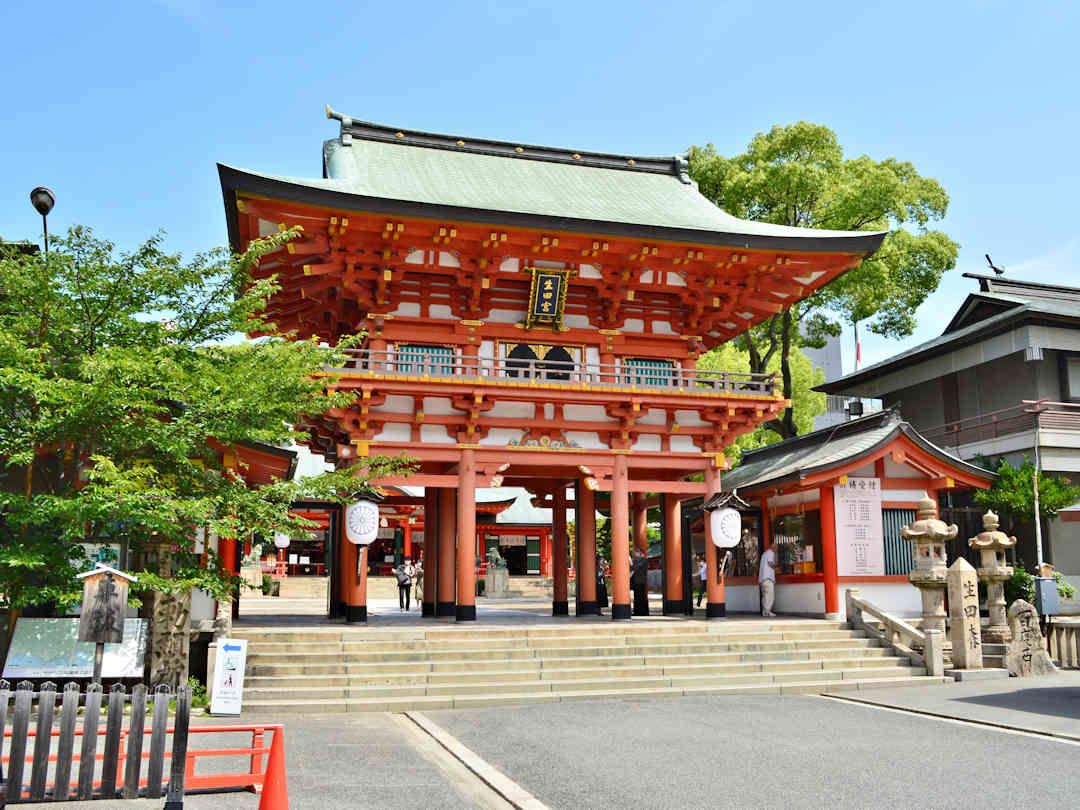
Founded in the early 3rd century, Ikuta-jinja in Kobe is a popular place for weddings | Photo by Wiki Commons
While the Shrine Gardens are gorgeous, don’t hang around for too long. There is an even more beautiful gem waiting for you: the Kobe Nunobiki Herb Gardens [Google Maps location], a picturesque botanical garden located in the hills above the city. To reach the gardens, head to the Sanroku Ropeway Station [Google Maps location] next to Shin-Kobe Station. You can reach the station on foot in about 20 minutes or take the Seishin-Yamate subway line from Sannomiya Station.
The ropeway will take you up to the top, passing the middle station along the way (make sure to stay on board).
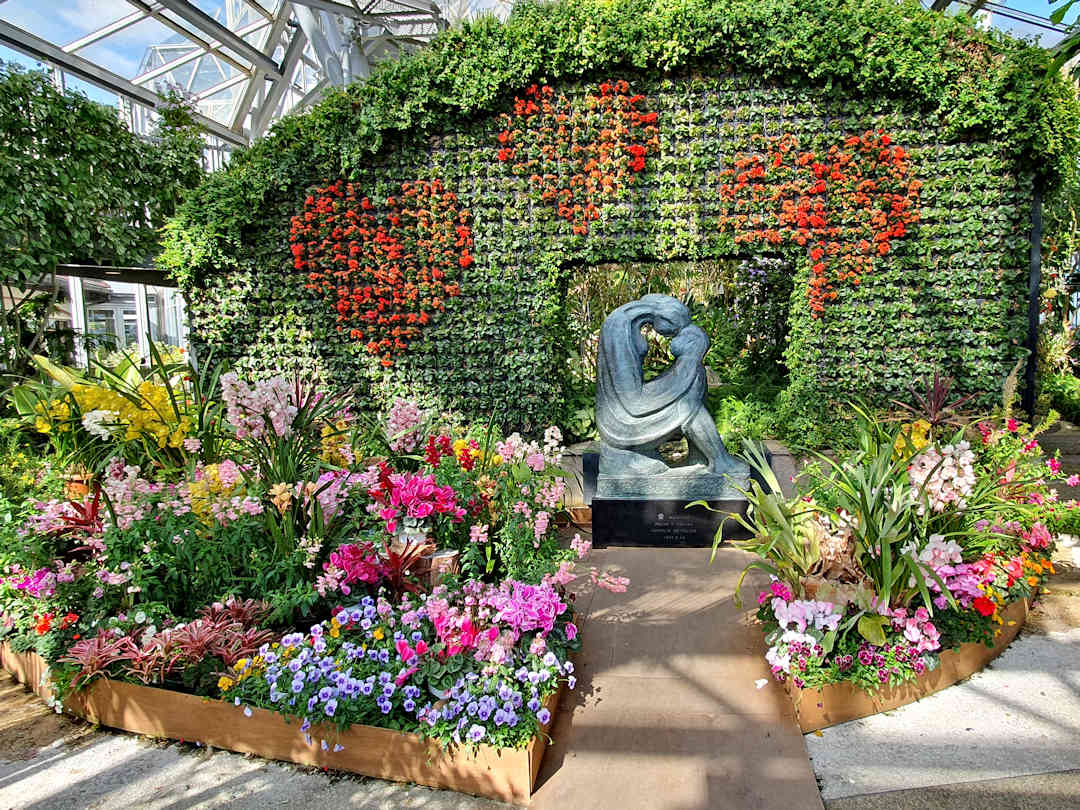
The Nunobiki Herb Gardens in the hills above Kobe offer stunning floral displays in any season
We recommend purchasing a one-way ticket, taking the cable car to the top and then walking down through the gardens to the middle station. This way, you’ll have a chance to fully explore the gardens and take in the breathtaking views of the city below.
From the middle station, continue your hike down to Shin-Kobe Station, passing the Nunobiki Dam [Google Maps location (Japan’s first concrete gravity dam) and the gorgeous Nunobiki-no-taki Waterfall [Google Maps location]. The hike will take you along scenic trails and allow you to fully appreciate the natural beauty of the area.
Hiking through the gardens, and past the dam and waterfall will take around 2 hours at a leisurely pace (the hike is around 2.5 kilometres long, with an elevation loss of about 330 metres).
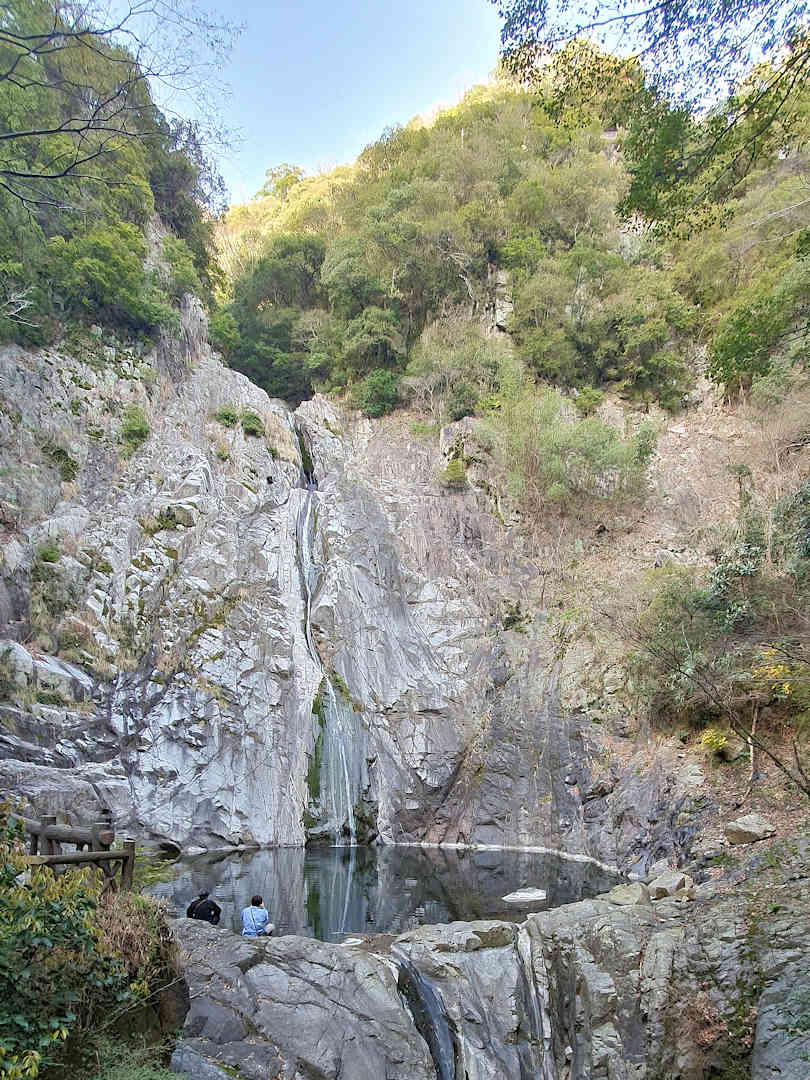
The hike from the Herb Gardens down to Shin-Kobe Station takes you past the stunning Nunobiki-no-taki Waterfall
Don’t attempt to hike the forest trail from the middle station down to the dam in rainy weather. The forest path is not well maintained and would be unsafe when wet. In rainy weather, we recommended skipping the dam, and instead walking from the middle station down along the road and joining the path to the waterfall after about 700 metres.
Also, if you’re short on time: buy the return ticket, walk down through the Kobe Nunobiki Herb Gardens from the top to the middle station, and then take the cable car back down from the middle station. If you still have time for the Nunobiki Waterfall, you can hike up to it from the bottom ropeway station in about 20 minutes one way (it’s a steep climb but well worth it).
If you’re staying in Kobe for the night, explore the historic houses in Kitano-cho on your way back to your accommodation, have dinner in one of the many restaurants in Chinatown and explore the waterfront at night.
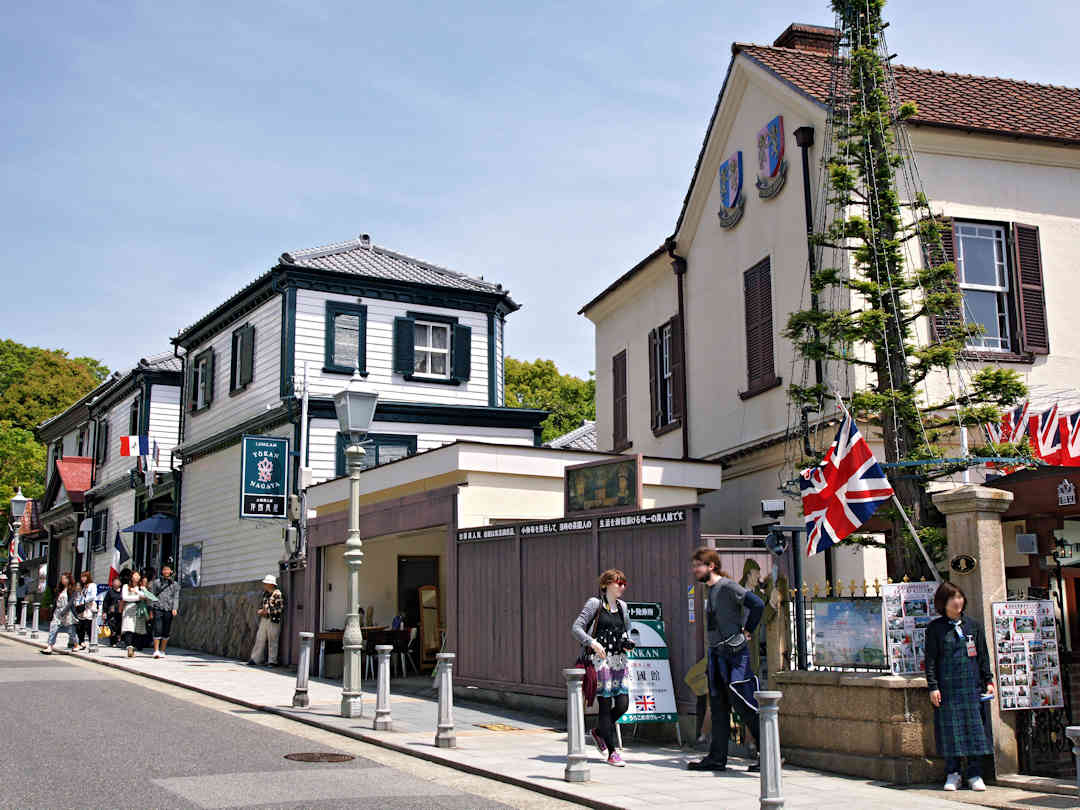
The Kitano-cho neighbourhood near Shin-Kobe Station is dotted with houses built for foreign settlers at the turn of the last century | Photo by Wiki Commons
Where to Stay in Kobe
For accommodation, as with any other travel expenses, it’s worth shopping around. When we booked our accommodation, we looked across several booking platforms to find the best value-for-money option but found in this case that Booking.com offered us the best choice and price point. Wherever you book, do make sure you read the fine print to make sure you compare apples with apples. For example, your stay may incur extra charges (like local tourist taxes or cleaning fees). Some booking platforms include them, while with others, you have to pay them to your host upon arrival.
Below are my recommendations for accommodation options that fit the criteria of affordable, often meeting a sustainability certification, and that are close to public transport and points of interest.
| Name | Property Features | Type | Price Indicator | Book Now |
|---|---|---|---|---|
| Hotel Monte Hermana Kobe Amalie | 24-hour front desk Great location Helpful staff | Hotel | $$$ | Book Now |
| Hotel Villa Fontaine Kobe Sannomiya | Facilities for disabled guests Spacious rooms | Hotel | $$$ | Book Now |
| Unizo Inn Kobe Sannomiya | Facilities for disabled guests On-site restaurant | Hotel | $$$ | Book Now |

